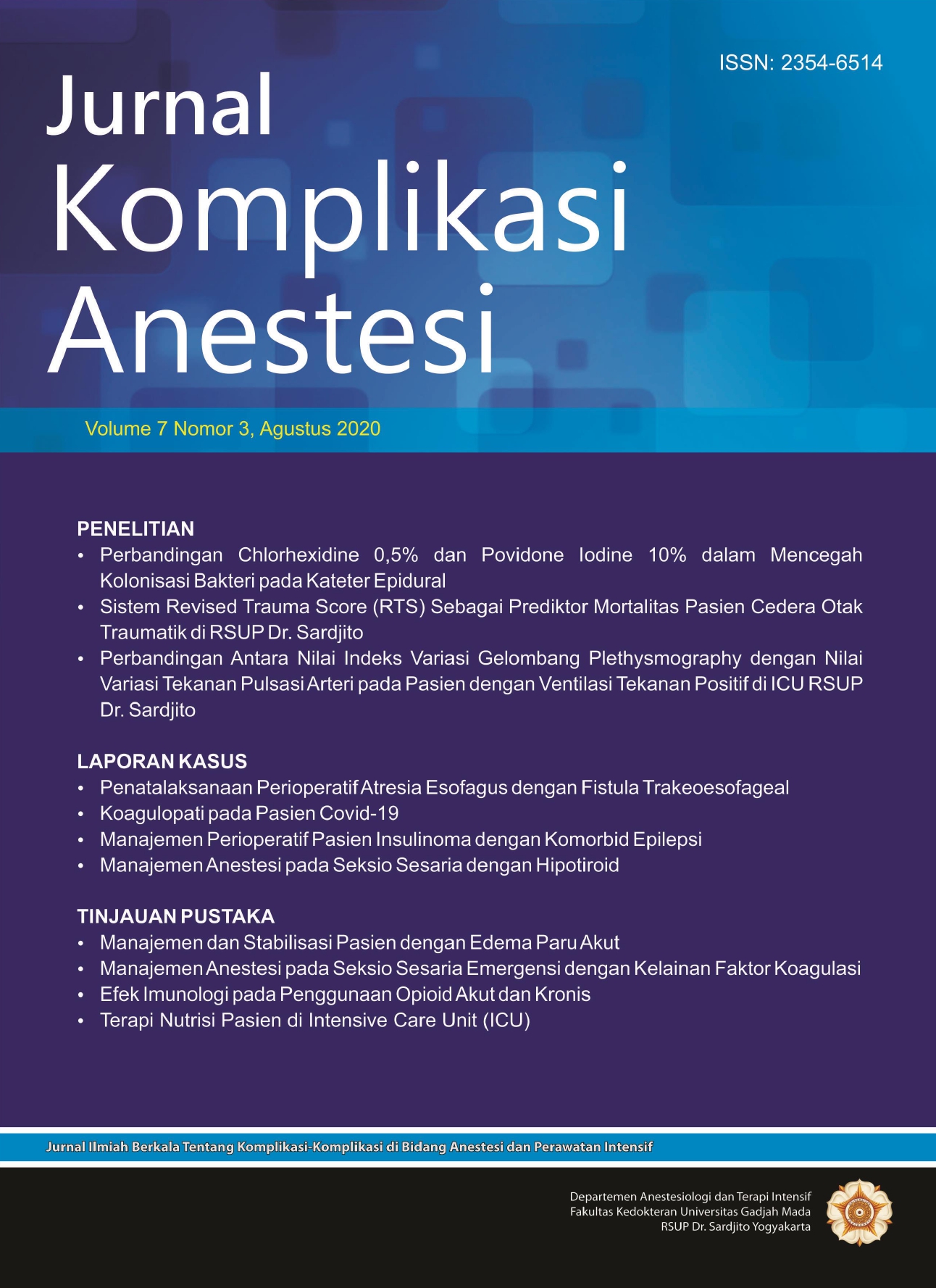Manajemen dan Stabilisasi Pasien dengan Edema Paru Akut
Abstract
Acute pulmonary edema is a condition when there is accumulation of fluid in the lungs (insterstitial space and alveoli). This fluid fills the alveoli in the lungs which makes it difficult for someone to breathe. The most common cause of pulmonary edema is caused by heart problems. However, the accumulation of fluid in the lungs can be caused by several reasons including pneumonia, some poisons, or drugs.
The number of deaths for one year for patients hospitalized with acute pulmonary edema reaches 40%. The most common causes of acute pulmonary edema include myocardial ischemia, cardiac arrhythmias (eg atrial fibrillation), cardiac valve dysfunction and excess fluid volume. It can also be caused by other causes including pulmonary embolism, renal artery stenosis, non-compliance with previous disease treatments and side effects from medications can also trigger pulmonary edema.
Management in patients with pulmonary edema we first look for diseases that underlie the occurrence of edema. Because it is a very important factor in treatment, so it needs to know the cause immediately. Because specific therapy cannot always be given until the cause is known, supportive therapy is very important. The general goal is to maintain basic physiological and cellular functions. Namely by improving the airway, adequate ventilation, and oxygenation

Copyright (c) 2020 Akhmad Yun Jufan, Bowo Adiyanto, Achmad Reza Arifin

This work is licensed under a Creative Commons Attribution-NonCommercial-ShareAlike 4.0 International License.
The Contributor and the company/institution agree that all copies of the Final Published
Version or any part thereof distributed or posted by them in print or electronic format as permitted herein will include the notice of copyright as stipulated in the Journal and a full citation to the Journal.
















